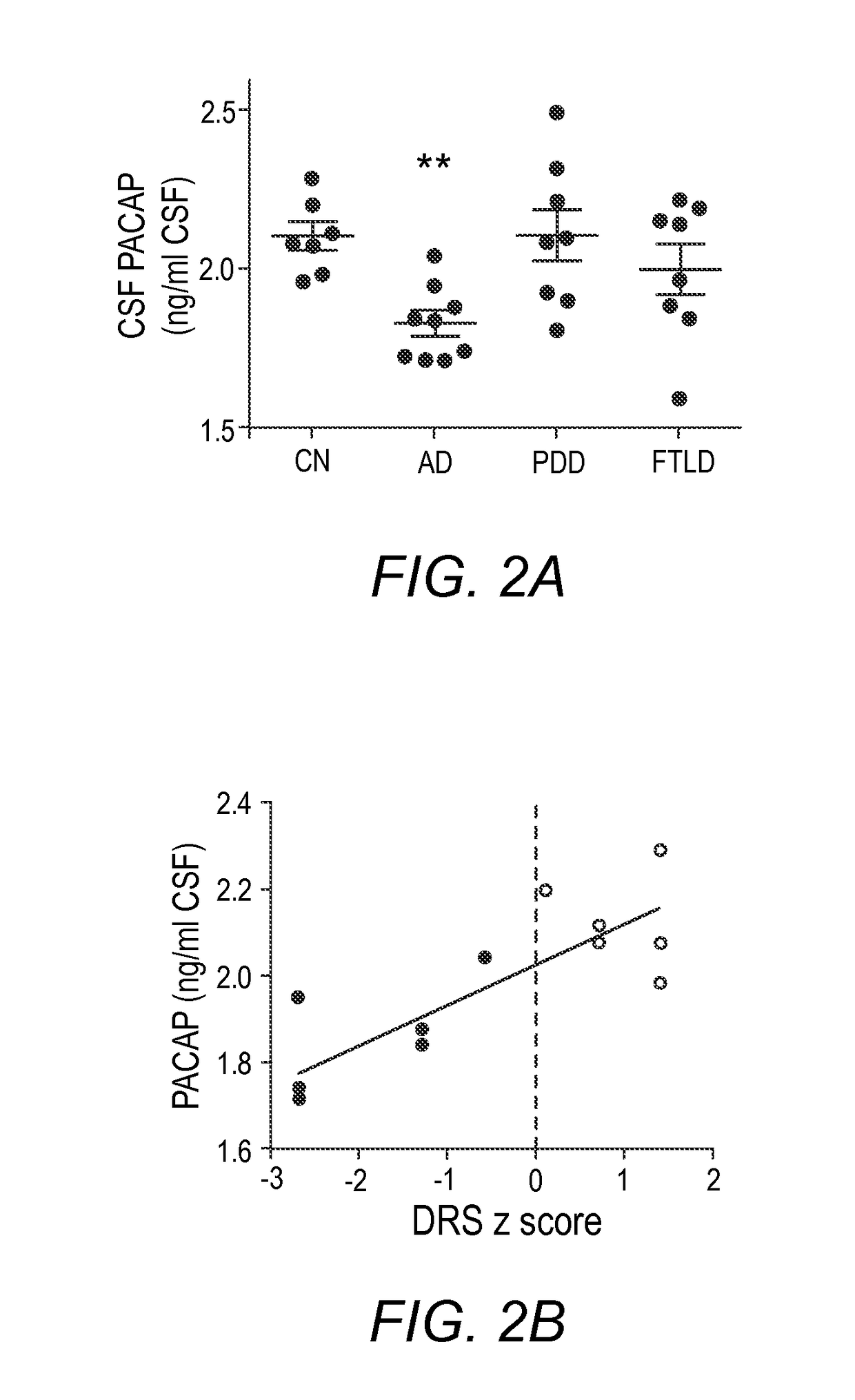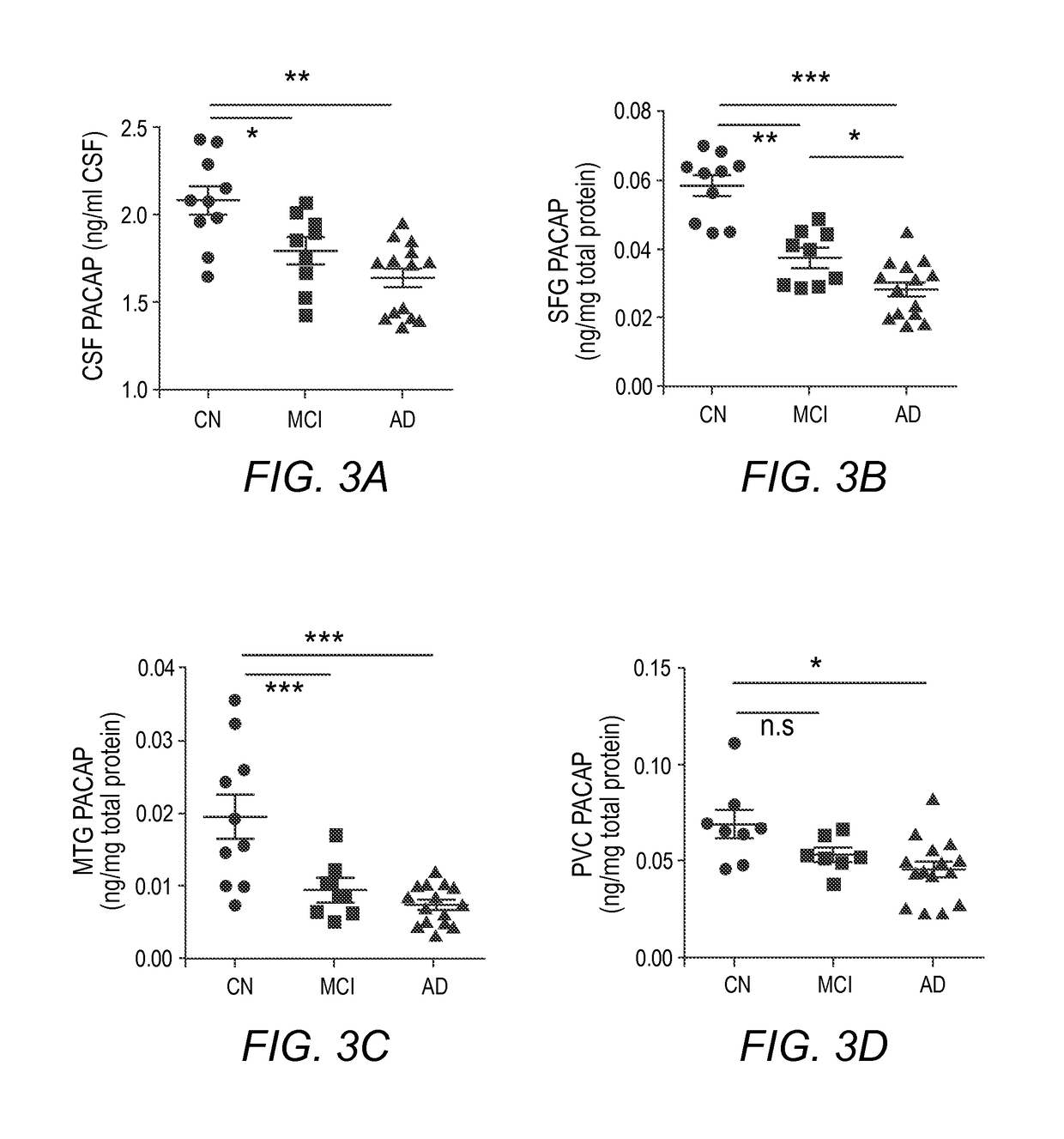Diagnosing and treating alzheimer's disease
a technology for alzheimer's and diagnosis, applied in the field of diagnosis and treatment of alzheimer's disease, can solve the problems of lack of effective biomarkers and treatment, lack of extensive study of pacap expression in the human brain, and lack of cure for the diseas
- Summary
- Abstract
- Description
- Claims
- Application Information
AI Technical Summary
Problems solved by technology
Method used
Image
Examples
example 1
Methods
[0149]Postmortem human brains were obtained from the Banner Sun Health Research Institute Brain and Body Donation Program (BBDP). The operations of the BBDP have been approved by the Western Institutional Review Board. Frozen brain tissues were obtained from patients with a clinical and pathological diagnosis of late onset AD and from age-matched cognitive normal subjects (CN). Brain donors all underwent extensive longitudinal clinical and neuropsychological assessment antemortem. All AD cases were selected as being “intermediate” or “high” probability for AD according to NIA-Reagan criteria (National Institute on Aging-Alzheimer's Association criteria). CN subjects did not meet the criteria for AD or dementia. The AD cases and controls did not differ significantly in their age at death, gender, or educational level. Cortical Aβ neuritic plaque density (CERAD evaluation) and Braak tangle stage were determined by a neuropathologist (T.G.B). Postmortem cisternal CSF samples fro...
example 2
Methods
[0163]Postmortem human cerebral cortex and cerebrospinal fluid (CSF) were obtained from the Arizona Alzheimer's Disease Center and the Banner Sun Health Research Institute Brain and Body Donation Program (BBDP), including 16 AD, 9 MCI and 10 CN subjects. All AD cases were selected as being “intermediate” or “high” probability for AD according to NIA-Reagan criteria (National Institute on Aging-Alzheimer's Association criteria) (Consensus recommendations for the postmortem diagnosis of Alzheimer's disease. The National Institute on Aging, and Reagan Institute Working Group on Diagnostic Criteria for the Neuropathological Assessment of Alzheimer's Disease 1997). In addition, they were free of other neurodegenerative disorders such as vascular dementia, Parkinson's disease, dementia with Lewy bodies, frontotemporal dementia, hippocampal sclerosis, progressive supranuclear palsy, dementia lacking distinctive histology, multiple system atrophy, motor neuron disease with dementia a...
PUM
| Property | Measurement | Unit |
|---|---|---|
| length | aaaaa | aaaaa |
| compositions | aaaaa | aaaaa |
| composition | aaaaa | aaaaa |
Abstract
Description
Claims
Application Information
 Login to View More
Login to View More - R&D
- Intellectual Property
- Life Sciences
- Materials
- Tech Scout
- Unparalleled Data Quality
- Higher Quality Content
- 60% Fewer Hallucinations
Browse by: Latest US Patents, China's latest patents, Technical Efficacy Thesaurus, Application Domain, Technology Topic, Popular Technical Reports.
© 2025 PatSnap. All rights reserved.Legal|Privacy policy|Modern Slavery Act Transparency Statement|Sitemap|About US| Contact US: help@patsnap.com



